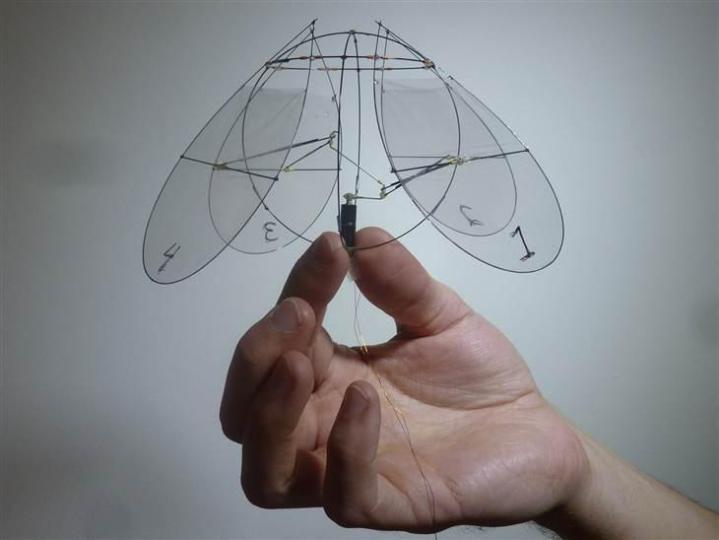
Yep, a jellyfish – the inspiration for a tiny flying robot built by a team from New York University. While unconventional in its design, the jellyfish-bot could pave the way for the next generation of intelligence and environmental data gathering drones.
The jellyfish-bot, built by a team led by Leif Ristroph, an associate professor of mathematics at NYU, weighs just 2 grams, and has a wingspan of just 8 centimeters. At the moment, the robot connects to a tethered power supply, and has no steering mechanism. But Ristroph tells News Scientist that improvements in the design could allow the tiny bot to carry a battery, freeing it to fly anywhere.
Most flying robots – commonly called drones, or unmanned aerial vehicles (UAVs) – are made to resemble helicopters, airplanes, flying insects, or birds. These aircrafts, however, must constantly fight with the wind, and make adjustments to stay on course. According to Ristroph, his drone is made for the exact opposite purpose – to be picked up by the wind and carried away. In doing so, the jellyfish-bot is perfect for monitoring things like air quality, says Ristroph. Of course the military could also make use of such a drone – though Ristroph tells NBC News that he envisions it being used for some type of “nice peace-time application,” like environmental quality checks.
For now, the jellyfish-bot remains in prototype form, which can be seen below in this fascinating video that looks like it was shot sometime around 1910. (It wasn’t – it just looks that way thanks to the oddly antiquated production value.)


